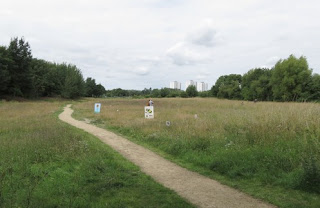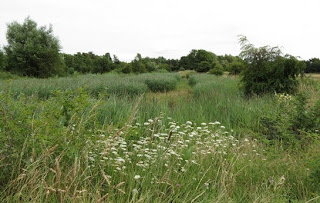 |
| Badgers - Laura Bimson |
As dusk falls over RSPB Burton Mere Wetlands, the nature
reserve comes alive and this
month, visitors have the chance to uncover the site's secret wildlife on a special dusk walk.
With the help of RSPB wardens, visitors can discover the
nocturnal creatures which make their home at the reserve, including
bats, badgers and owls.
There will also be the opportunity to witness a wildlife
spectacle at Burton Mere Wetlands, which is home to one of the UK s
largest colonies of little egrets. As dusk approaches, close to 400 of the
birds a new
record for the reserve
gather from across the estuary, creating a remarkable sight. Dan Trotman, Visitor Development Officer at RSPB Dee
Estuary Reserves, said: Whilst these
birds are seen regularly feeding across the estuary s saltmarsh during the day, nothing compares to
the sight and sound of dozens flying together into the tree-tops next
to the nature reserve for the night. It s an amazing sight to watch.
As darkness looms, the first of the reserve s nocturnal
residents emerge the bats.
Burton Mere Wetlands is home to several types of bat and visitors can get up close to one type known as the
water bat, as they zip back and forth catching flies over the water,
just inches from the footpath. During the special dusk walk, visitors will also have the
chance to venture into the Gorse Covert woodland, listen to the
tawny owls calling to each other and hopefully catch a glimpse of
young badgers foraging in the woods as twilight falls.
Geoff Robinson, Asst Warden for RSPB Dee Estuary
Reserves, said: There have been
evenings when I 've been here alone and seeing the little egret colony in all its glory makes all the hard
work we' ve put into managing this wetland over the years seem all the
more worthwhile. The bats are
superb - you can end up with them swirling all around you, just inches away. The badgers are brilliant to watch
too. They have lived at Burton Mere Wetlands for years, but their
home is now protected as it sits within RSPB land.
The walk is a
great way to experience the reserve after dusk. I don' t think people appreciate how much goes on here after the
sun goes down it really is worth discovering.
In a bid to enable people to experience as much of the evening
activity on the reserve as possible, the guided Dusk Walk will be
held on Friday 30 August, starting at 6.30pm. The cost for the walk
is £5 per adult ( 3 for RSPB members) and £1 per child (free for RSPB Wildlife Explorer members).
For more information on the reserve and its activities,
please call the reserve on 0151 353 8478, or check out the website www.rspb.org.uk/deeestuary.
.jpg) |
| Juvenile Tawny owl. Andy Hay |
Burton Mere Wetlands is the gateway to the RSPB s Dee
Estuary nature reserve, with one of the newest visitor facilities in the
country. From the comfort
of the reception building, visitors can see nesting avocets and lapwings in the summer and huge flocks of
ducks, geese and swans in winter. Water voles and badgers are resident here,
whilst the summer months are alive with flickering colours from the
countless dragonflies and butterflies.
Location and opening times:
RSPB Burton Mere Wetlands, Puddington Lane, Burton,
Cheshire, CH64 5SF. The reserve
is open daily (except Christmas Day) from 9am to 5pm from November to
March, and 9am to dusk from April to October.
The reception building is open from 9.30am to 5pm year-round.




















